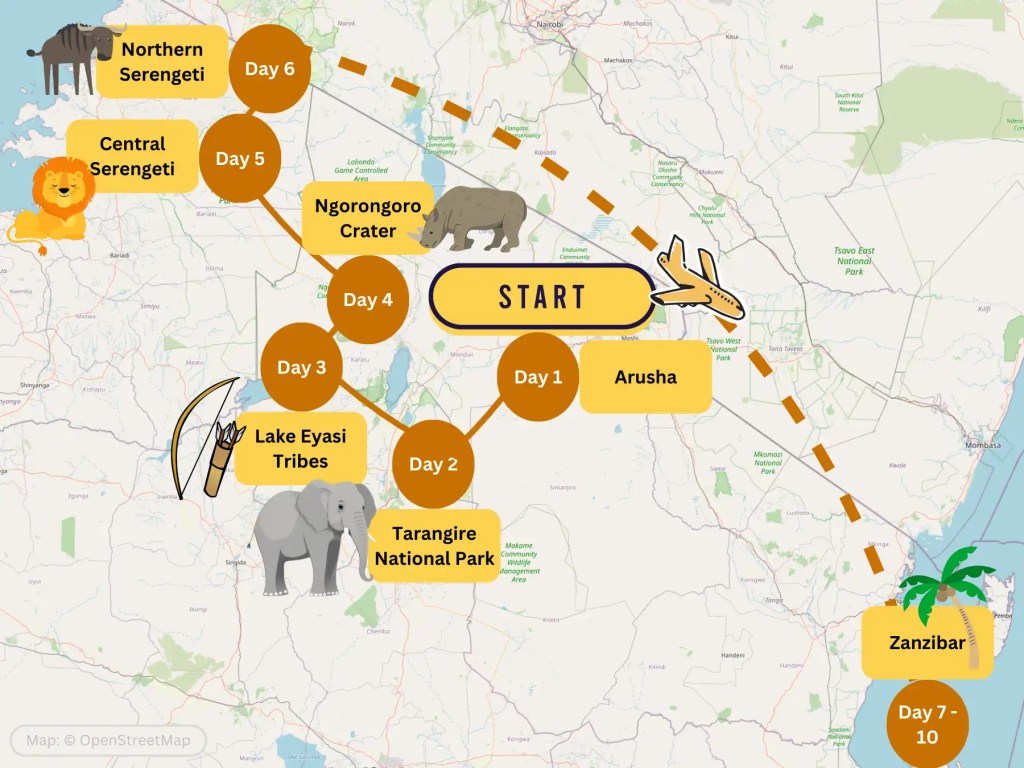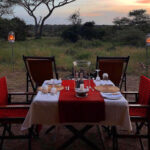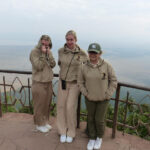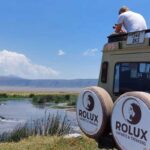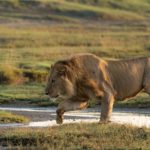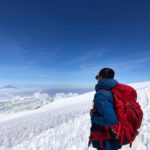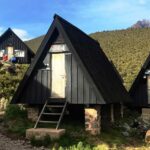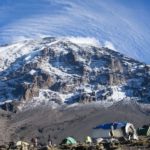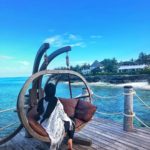Planning a Tanzania safari is akin to orchestrating a symphony with the Serengeti as your stage. Did you know that Tanzania dedicates over 30% of its land to national parks and wildlife reserves? This makes it a prime destination for encountering Africa’s most iconic animals in their natural habitat.
The first step is determining the best time to visit, depending on whether you want to witness the Great Migration or prefer bird watching. Next, research reputable safari operators that are dedicated to conservation efforts. With careful planning, you can have a trip that is both adventurous and environmentally responsible.
- Choose the best time to visit, typically June to October for wildlife viewing.
- Select parks such as Serengeti or Ngorongoro based on interests and budget.
- Book through a reputable operator like Rolux Safaris.
- Prepare essential gear including clothing, camera, and binoculars.
- Review travel documents and health precautions.

How to Plan a Tanzania Safari from Start to Finish
Planning a Tanzania safari starts with deciding the best time to go. The dry season from late June to October is ideal for wildlife viewing. You can witness the Great Migration during these months, offering a unique experience. On the other hand, the wet season from November to May is perfect for birdwatching. Each season has its own attractions, so pick based on your interests.
Next, choose the safari parks you wish to visit. The Serengeti National Park is famous for the Great Migration. Ngorongoro Crater is another must-see, known for its high concentration of wildlife. Selous Game Reserve offers a more remote safari experience. Consider adding Tarangire and Lake Manyara for diverse landscapes and fewer crowds.
Booking your safari with Rolux Safaris ensures a tailored experience. With expert guides and well-planned itineraries, you can enjoy a stress-free adventure. They offer various packages to fit your budget and preferences. By booking early, you can secure the best accommodations. Rolux Safaris focuses on providing memorable and ethical experiences.
Ensure you pack the right gear for your safari. Essential items include lightweight clothing, a good camera, and binoculars. Don’t forget sunscreen and insect repellent to stay comfortable. A hat and sunglasses will protect you from the sun. Packing smartly enhances your overall experience.
Step 1: Choose the Right Time of Year
Choosing the right time to visit Tanzania significantly impacts your safari experience. The best time for wildlife viewing is during the dry season, which runs from late June to October. Animals are easier to spot during this time because they gather around water sources. The Great Migration, with over a million wildebeests and zebras, typically peaks in these months. If seeing this natural spectacle is on your bucket list, plan accordingly.
Birdwatchers should consider visiting during the wet season, from November to May. During this period, the landscapes are lush, and migratory birds from Europe and Asia flock to Tanzania. It’s also a good time to see baby animals as many species give birth. The parks are less crowded, offering a more peaceful experience. Keep in mind that some areas may be more challenging to access due to rain.
Another factor to consider is the calving season, which occurs from January to March. During this time, around half a million wildebeest are born in the Southern Serengeti. This season provides excellent opportunities for predator sightings as big cats take advantage of the abundance of prey. If you are a photography enthusiast, the green landscapes offer a stunning backdrop for your pictures.
Ultimately, your choice depends on what you want to see and do. Make use of resources like Rolux Safaris’ expert guides to help tailor your trip to your preferences. Whether you’re interested in the Great Migration, birdwatching, or capturing iconic wildlife moments, planning your visit at the appropriate time is crucial. Proper timing ensures you get the maximum enjoyment from your adventure.
Step 2: Selecting the Best Safari Parks to Visit
Selecting the best safari parks in Tanzania is crucial for an enriching experience. The Serengeti National Park stands out for its vast plains and large population of wildlife. It’s famous for the Great Migration, where millions of wildebeests and zebras move in search of fresh grazing. This park offers incredible opportunities for game viewing all year round.
For a unique experience, consider visiting the Ngorongoro Conservation Area. This park is home to the Ngorongoro Crater, a natural wonder formed by a collapsed volcano. The crater floor hosts a diverse range of animals, including the Big Five. Additionally, the scenic landscapes make it a photographer’s paradise. It’s one of the best places to see endangered black rhinos.
If you prefer a quieter visit, head to the Selous Game Reserve. This lesser-known park offers less crowded safari experiences in a more remote setting. It is one of the largest faunal reserves in the world and allows for a variety of activities. You can enjoy walking safaris and boat safaris, which provide a different perspective on the wildlife. The Rufiji River is a major feature of the reserve.
Lake Manyara National Park and Tarangire National Park are also worth considering. Lake Manyara is renowned for its tree-climbing lions and stunning flamingo populations. Tarangire is famous for its large elephant herds and ancient baobab trees. Together, these parks offer a diverse range of ecosystems and wildlife experiences. Visiting multiple parks ensures a well-rounded and fulfilling safari adventure.
Step 3: Booking Your Safari with Rolux Safaris
Booking your safari with Rolux Safaris ensures a seamless and enjoyable adventure in Tanzania. Their team of experienced professionals takes care of every detail, allowing you to focus on the excitement of the journey. They offer a range of packages tailored to different interests and budgets. Whether you prefer luxurious lodges or budget-friendly campsites, they have you covered. Safety and satisfaction are their top priorities.
When booking, you’ll need to decide on the length of your safari. Typical safaris range from 3 to 10 days, depending on how many parks you want to visit. A shorter safari is perfect if you’re pressed for time. Longer safaris allow you to explore more regions and enjoy a deeper immersion in nature. Rolux Safaris can help you customize an itinerary that fits your schedule and preferences.
Think about what kind of tour you’d like to experience. Some prefer private tours which offer a more intimate and personalized experience. Others may enjoy group tours, which can be more economical and provide a chance to meet fellow travelers. Family-friendly tours are also available, designed to engage and educate children about wildlife. Selecting the right type of tour enhances your overall satisfaction.
Preparation is key, so make sure to communicate any specific needs or preferences to Rolux Safaris. This includes dietary restrictions, medical conditions, and special occasions. Their attention to detail ensures that these needs are met. Informing them in advance allows for a hassle-free and enjoyable experience in the wilderness. Personalized services make a significant difference.
Finally, review the package inclusions and exclusions carefully. Typical inclusions are accommodation, meals, park fees, and guided game drives. Exclusions might include international flights, visas, and travel insurance. Checking this information prevents unexpected expenses. It’s always best to clarify any doubts beforehand for a smooth trip.
Essential Gear and Tips for a Successful Tanzania Safari
To have a memorable Tanzania safari, packing the right gear is essential. Start with clothing suitable for the climate. Light, breathable fabrics are ideal for the hot days, while warmer layers are necessary for cool mornings and evenings. Neutral colors like khaki and green blend well with the environment and are less likely to attract wildlife. Comfortable shoes, a wide-brimmed hat, and sunglasses are also vital items.
Packing the right accessories ensures an enjoyable experience. A good camera with a zoom lens is essential for capturing unforgettable wildlife moments. Binoculars help you spot animals from a distance. Don’t forget a flashlight or headlamp for nighttime activities. A lightweight backpack is useful for carrying essentials during game drives. Additionally, take a reusable water bottle to stay hydrated.
Health and safety should be priorities on your safari. Pack any necessary medications and a basic first aid kit. Items like insect repellent and sunscreen can protect you from mosquito bites and sunburns. Anti-malarial medication is recommended for Tanzania. It is also wise to carry travel insurance that covers medical emergencies. Being prepared helps you focus on enjoying your adventure.
- Light, breathable clothing
- Comfortable shoes
- Wide-brimmed hat and sunglasses
- Camera and zoom lens
- Binoculars
- Flashlight or headlamp
- Reusable water bottle
Lastly, familiarize yourself with local customs and regulations to ensure a respectful visit. Learn a few phrases in Swahili to engage with locals. Always follow the guide’s instructions to ensure safety and minimize your impact on the environment. Being considerate of wildlife and local communities enhances your experience. Respect for the culture and nature of Tanzania enriches your safari adventure.
Key Takeaways
- Visit Tanzania from June to October for the best wildlife viewing.
- Choose parks like Serengeti and Ngorongoro based on your interests.
- Book your safari with a trusted operator like Rolux Safaris.
- Pack essential gear such as clothing, cameras, and binoculars.
- Ensure your travel documents and health precautions are up to date.

